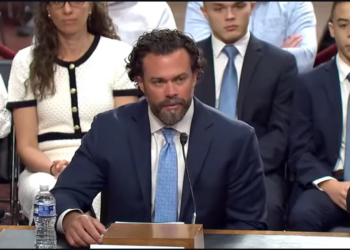What’s a great winning political strategy? Picking issues on which the majority of your constituents agree. For example, ameliorating homelessness isn’t all that controversial. According to the National Alliance to End Homelessness, 76% of Americans believe homelessness is a solvable problem, and 72% think it can be fixed locally with federal intervention.
Advocating for solutions to problems that most Americans want solved is a great strategy, and President Donald Trump’s latest executive order, “Ending Crime and Disorder on American Streets,” attempts to do just that. Even though it’s been labeled a homelessness EO, it’s really about ending vagrancy and its associated criminality.
The president has instructed Attorney General Pam Bondi to seek the “reversal of Federal or State judicial precedents and the termination of consent decrees that impede the United States’ policy of encouraging civil commitment of individuals with mental illness who pose risks to themselves or the public or are living on the streets and cannot care for themselves in appropriate facilities for appropriate periods of time.”
Furthermore, he is calling for interagency cooperation between the Department of Health and Human Services and the Department of Housing and Urban Development to award grants to states that back away from “‘housing first’ policies that deprioritize accountability and fail to promote treatment, recovery, and self-sufficiency.” Under President Joe Biden, one such egregious example of this pedagogy was his attempt to enforce “harm reduction” policies, whereby people who were homeless due to addiction were given crack pipes and safe consumption spaces. The idea was that if people are going to do drugs, let’s help them do it “safely” and not in a public place. But if you genuinely care about the homeless, why would you bolster a policy that encourages them to continue the habits and choices that led, partially or completely, to their sorry state in the first place?
Another big push in Trump’s EO is getting dangerous vagrants off the streets of our cities. Here’s where the Democrats are making a big fuss. The Washington Post makes the counterargument that forcing people to go into homeless shelters or mental facilities is a good way for abuse to happen. What if someone who is not a vagrant or mentally ill gets put in a mental hospital, as people were in England? What if we run out of room in our homeless shelters and jails?
In other words, the WaPo dislikes this EO because of hypothetical outlier situations or because cities fail to provide for the homeless within their borders. As this author has written before, homelessness, particularly in big cities, is exacerbated by poor left-wing governance at the local level.
Finally, Trump’s EO provides grant money for states to build women’s and children’s-only homeless shelters, which protects these particularly vulnerable demographics, and gives the federal government oversight into how the state is spending the funds to ensure they’re going where they need to go. The central government cannot be the boots on the ground. Federal officials lack the necessary expertise and aren’t part of the community. Enforcing laws, discouraging abuse, and protecting the American people is exactly the role the federal government should play in addressing homelessness.
“Ending Crime and Disorder on American Streets” presents a range of commonsense, carrot-and-stick ideas to encourage states to work more effectively in addressing the issue of criminal vagrancy. The fact that Democrats had to spin it as kicking out homeless people from public life or being abusive toward the innocent shows there isn’t an issue on which leftists will even try to agree with most Americans.
















